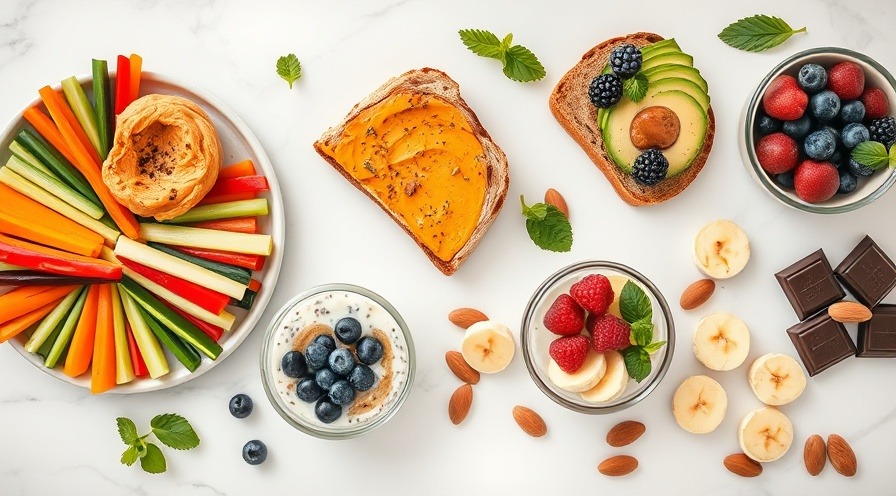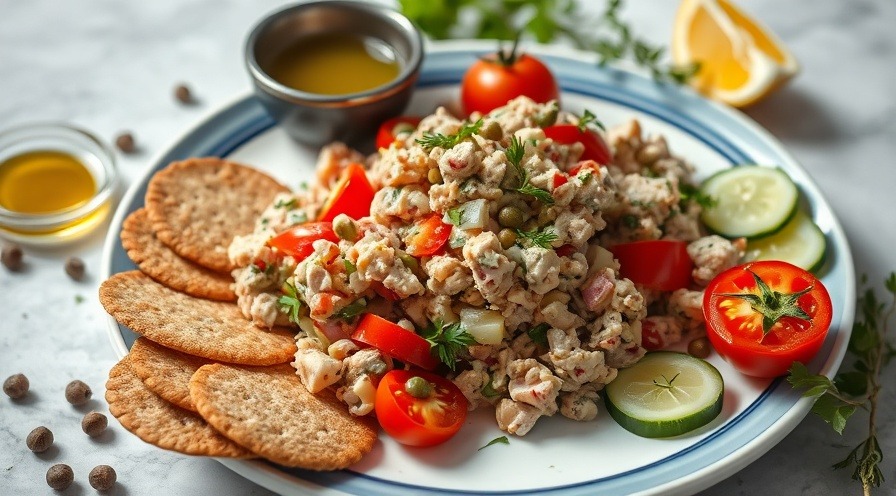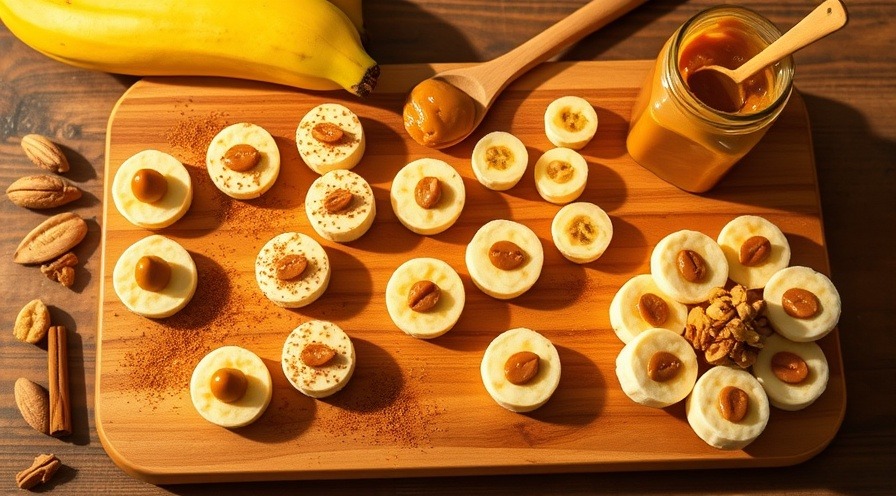
Delicious Bites for a Healthy Heart: Your Guide to Lowering Blood Pressure with Smart Snacking
Your heart deserves the best, and that includes the snacks you choose throughout the day. While managing blood pressure might seem like a daunting task filled with restrictions, the truth is far more delicious than you might imagine. Smart snacking can be your secret weapon in the fight against high blood pressure—and it doesn't require sacrificing flavor or satisfaction.
Think of your snack choices as tiny love letters to your cardiovascular system. Each bite is an opportunity to nourish your body with nutrients that actively support healthy blood pressure levels. From the creamy richness of avocado to the satisfying crunch of fresh vegetables, heart-healthy snacking is about abundance, not deprivation.
"The beauty of blood pressure-friendly snacking lies in its simplicity," explains Dr. Sarah Chen, a preventive cardiologist. "When we choose foods rich in potassium, magnesium, and fiber, we're not just satisfying hunger—we're actively supporting our body's natural ability to regulate blood pressure. These nutrients work synergistically to relax blood vessels, reduce sodium's impact, and promote overall cardiovascular health."
The Power of Purposeful Snacking
Your snack choices ripple through your entire day, influencing energy levels, mood, and yes—your blood pressure. The seven snacks we'll explore aren't just delicious; they're nutritional powerhouses that work behind the scenes to support your heart health. Each one brings unique benefits to the table, from omega-3 fatty acids that reduce inflammation to antioxidants that protect your blood vessels.
But here's the exciting part: incorporating these snacks into your routine doesn't require a complete lifestyle overhaul. Whether you're a busy professional grabbing something quick between meetings, a parent feeding hungry kids after school, or someone who loves to experiment in the kitchen, these versatile options adapt to your life, not the other way around.

1. Hummus and Vegetables: The Mediterranean Marvel
Transform your snack time into a colorful Mediterranean escape with this protein-packed combination. Hummus, made from chickpeas, delivers a powerful punch of fiber and plant-based protein, while fresh vegetables provide essential vitamins and that satisfying crunch your taste buds crave.
Creative Serving Ideas:
Rainbow Wraps: Spread hummus on large lettuce leaves or whole grain tortillas, add julienned vegetables, and roll for a portable snack
Stuffed Bell Peppers: Fill mini bell pepper halves with hummus and top with diced cucumber and herbs
Veggie Boats: Use celery stalks as vessels for different flavored hummus varieties
Mediterranean Bento Box: Arrange hummus in small containers alongside colorful vegetable compartments
Flavor Adventures: Expand beyond classic hummus with roasted red pepper, sun-dried tomato, or herb-infused variations. Try pairing spicy harissa hummus with cooling cucumber, or sweet beet hummus with crisp carrots. For vegetables, think beyond carrots and celery—try radishes for peppery bite, jicama for sweet crunch, or sugar snap peas for natural sweetness.
Lifestyle Integration: Busy professionals can prep individual hummus portions in small containers with pre-cut vegetables for grab-and-go convenience. Weekend warriors might enjoy making fresh hummus in bulk, experimenting with different bean bases like white beans or black beans. For families, create a "hummus bar" where everyone can customize their own vegetable selections.

2. Avocado Toast: The Creamy Canvas
Elevate the humble avocado toast from trendy breakfast to blood pressure-lowering snack superstar. Avocados are potassium powerhouses, containing more of this vital mineral than bananas, while providing heart-healthy monounsaturated fats that support overall cardiovascular function.
Gourmet Variations:
Savory Sensations: Top with everything bagel seasoning, crumbled feta, and cherry tomatoes
Spicy Kick: Add sriracha, lime juice, and cilantro for a zesty twist
Sweet & Savory: Drizzle with honey, sprinkle with sea salt, and add sliced strawberries
Protein Power: Crown with a perfectly poached egg or smoked salmon
Preparation Mastery: Choose avocados that yield slightly to gentle pressure—too firm and they won't spread well, too soft and they'll be mushy. Keep cut avocados fresh by storing with a piece of onion or brushing with lemon juice. For batch preparation, mash avocados with a fork and add a squeeze of lime juice to prevent browning.
Beyond Basic Bread: While whole grain bread is classic, experiment with sweet potato rounds, cauliflower toast, or seed crackers for different textures and nutritional profiles. Rice cakes offer a lighter option, while sprouted grain bread provides extra fiber and nutrients.

3. Tuna Salad: Ocean's Heart Helper
Reimagine tuna salad as a sophisticated, heart-healthy snack that delivers omega-3 fatty acids in every bite. These essential fats act as natural anti-inflammatories, helping to keep blood vessels flexible and reducing the risk of cardiovascular complications.
Elevated Preparations:
Mediterranean Style: Mix with olive oil, capers, diced olives, and fresh herbs
Asian Fusion: Combine with sesame oil, rice vinegar, edamame, and sliced radishes
Tropical Twist: Add diced pineapple, coconut flakes, and curry powder
Garden Fresh: Incorporate diced cucumber, celery, and fresh dill
Smart Serving Solutions: Skip the mayo-heavy versions and opt for Greek yogurt or avocado as your creamy base. Serve on whole grain crackers, stuff into cherry tomatoes, or use as a dip for vegetable sticks. For a lighter option, serve over mixed greens or wrap in nori sheets for an unexpected twist.
Nutritionist Amanda Rodriguez emphasizes the importance of consistency:
"The key to seeing blood pressure benefits from heart-healthy snacks isn't perfection—it's persistence. When you regularly choose nutrient-dense options like omega-3 rich tuna, you're building a foundation of cardiovascular health one snack at a time."
4. Greek Yogurt and Berries: The Probiotic Powerhouse
This dynamic duo combines the protein punch of Greek yogurt with the antioxidant abundance of berries, creating a snack that's as beneficial for your blood pressure as it is satisfying for your taste buds. The probiotics in yogurt may help regulate blood pressure, while berries provide anthocyanins that support blood vessel health.
Decadent Combinations:
Berry Parfait Layers: Alternate yogurt with mixed berries and a sprinkle of granola
Smoothie Bowl Base: Use thick Greek yogurt as a canvas for beautiful berry arrangements
Frozen Treats: Blend and freeze in popsicle molds for a cooling summer snack
Chia Berry Crunch: Add chia seeds and crushed nuts for extra texture and nutrition
Flavor Enhancements: Sweeten naturally with a drizzle of honey or maple syrup, or add vanilla extract for depth. Experiment with different berry combinations—blueberries for sweetness, raspberries for tartness, or blackberries for bold flavor. Fresh herbs like mint or basil can add an unexpected and refreshing twist.
Preparation Strategies: Buy frozen berries to have this snack available year-round—they're often more nutritious than out-of-season fresh berries and won't spoil quickly. Pre-portion yogurt and berries in mason jars for easy grab-and-go snacks, or keep a large container of the mixture ready for quick serving.

5. Chia Pudding: The Mighty Seed Marvel
Don't let their tiny size fool you—chia seeds are nutritional giants that transform into creamy, satisfying puddings when mixed with liquid. Rich in omega-3 fatty acids, fiber, and magnesium, chia pudding is a make-ahead snack that works around the clock to support healthy blood pressure.
Flavor Adventures:
Chocolate Decadence: Add cocoa powder and a touch of vanilla for a guilt-free treat
Tropical Paradise: Mix with coconut milk and top with mango and coconut flakes
Pumpkin Spice: Blend with pumpkin puree and warming spices
Matcha Magic: Incorporate matcha powder for an antioxidant boost and beautiful green color
Texture Innovations: The basic ratio is 1 part chia seeds to 4 parts liquid, but you can adjust for your preferred consistency. For creamier pudding, blend half the mixture after it's set. Add layers of different flavors for visual appeal, or incorporate mix-ins like chopped nuts, dried fruit, or coconut flakes.
Meal Prep Mastery: Chia pudding improves with time, making it perfect for weekly meal prep. Mix several flavors on Sunday and enjoy them throughout the week. They keep well in the refrigerator for up to five days, and the flavors often intensify and improve over time.

6. Peanut Butter and Banana Rounds: The Energy Champion
This classic combination gets a heart-healthy makeover when you choose natural peanut butter and pair it with potassium-rich bananas. The result is a satisfying snack that provides sustained energy while supporting healthy blood pressure levels.
Creative Presentations:
Banana Sushi: Spread peanut butter on a whole banana, roll in crushed nuts or seeds, then slice into rounds
Frozen Bites: Freeze banana rounds with peanut butter centers for a cool treat
Stuffed Dates: Fill pitted dates with peanut butter and top with banana slices
Smoothie Bowls: Blend and serve thick, topped with banana slices and a peanut butter drizzle
Nutritional Upgrades: Choose natural peanut butter without added sugars or oils, or experiment with other nut and seed butters like almond, sunflower seed, or tahini. Add a sprinkle of cinnamon for blood sugar benefits, or a dash of vanilla for extra flavor depth.
Dr. Michael Thompson, a registered dietitian, notes:
"The combination of healthy fats from nuts and potassium from bananas creates a perfect storm of cardiovascular benefits. The magnesium in both foods helps relax blood vessels, while the fiber aids in overall heart health. It's a snack that truly works as hard as you do."
Lifestyle Adaptations: For busy mornings, pre-slice bananas and store with a bit of lemon juice to prevent browning. Keep individual peanut butter packets in your bag for office snacking, or prepare banana and peanut butter "sandwiches" using banana slices as the bread.

7. Dark Chocolate and Peanut Butter: The Indulgent Heart Helper
Yes, you read that right—chocolate can be part of your blood pressure-lowering snack strategy! Dark chocolate contains flavonoids that may help improve blood flow and reduce blood pressure, while peanut butter provides protein and healthy fats for sustained satisfaction.
Sophisticated Combinations:
Elegant Dipped Squares: Melt dark chocolate and drizzle over peanut butter spread on whole grain crackers
Energy Balls: Mix peanut butter, cocoa powder, and oats into no-bake energy bites
Stuffed Dates: Fill dates with peanut butter and dip in melted dark chocolate
Frozen Bark: Spread peanut butter on a sheet pan, drizzle with melted chocolate, and freeze before breaking into pieces
Quality Matters: Choose dark chocolate with at least 70% cacao content for maximum flavonoid benefits. Look for minimal ingredients—the best dark chocolate contains just cocoa, cocoa butter, and a small amount of sweetener. For peanut butter, stick to natural varieties without added sugars or hydrogenated oils.
Portion Wisdom: This indulgent snack is best enjoyed in moderation. A small square of dark chocolate paired with a teaspoon of peanut butter provides satisfaction without overdoing calories. Pre-portion these treats to avoid mindless eating, and savor each bite slowly to maximize satisfaction.
Creating Your Heart-Healthy Snacking Lifestyle
The magic of these seven snacks lies not just in their individual benefits, but in how they can seamlessly integrate into your daily routine. Start by choosing one or two favorites to incorporate regularly, then gradually expand your repertoire as these healthy choices become second nature.
Remember that heart-healthy living extends beyond snacking. Regular physical activity, stress management techniques like meditation or yoga, and maintaining a healthy weight all work together with smart food choices to support optimal blood pressure. Think of your snacks as one important piece of a larger wellness puzzle.
Practical Implementation Tips:
Weekly Prep Sessions: Dedicate 30 minutes each week to snack preparation. Wash and cut vegetables, portion out nuts and seeds, or prepare chia pudding bases. This small investment of time pays dividends in healthy choices throughout the week.
Smart Shopping: Keep your pantry stocked with staples like natural nut butters, canned tuna, Greek yogurt, and frozen berries. Having these ingredients on hand makes healthy snacking effortless, even on busy days.
Mindful Eating: Take time to truly enjoy your snacks. Eating mindfully not only increases satisfaction but also helps you tune into your body's hunger and fullness cues, supporting overall health goals.
Social Snacking: Share these healthy options with family and friends. Preparing heart-healthy snacks together can be a fun bonding activity, and having support makes maintaining healthy habits easier and more enjoyable.

Your Journey to Better Heart Health
Every snack is an opportunity to nourish your body and support your cardiovascular health. These seven options prove that eating for your heart doesn't mean sacrificing flavor or satisfaction. From the creamy richness of avocado toast to the indulgent pleasure of dark chocolate and peanut butter, healthy snacking can be both delicious and beneficial.
Start where you are, use what you have, and do what you can. Your heart will thank you for every thoughtful choice you make, and your taste buds will celebrate the delicious journey toward better health. Remember, the path to optimal blood pressure isn't about perfection—it's about progress, one satisfying snack at a time.
The power to support your heart health is literally at your fingertips, waiting in your kitchen, ready to be transformed into something both nourishing and delicious. Your healthy heart journey begins with your very next snack choice. Make it count, make it delicious, and most importantly, make it yours.
 Add Row
Add Row  Add
Add 




Write A Comment